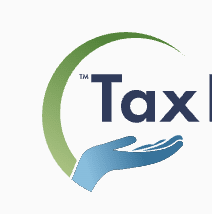
The good news? Your tax strategy might be the best tool you have to push back. This guide explains how tariffs increase costs for everyday households and offers practical, legal ways to mitigate the impact through tax planning.
» Inflation hitting your wallet? Check out our best tax relief services to maximize your savings.
Key Insights
- Tariffs can raise product prices by 0.5% to 2.2%, hitting households across all income levels.
- Categories most affected include electronics, appliances, and vehicles.
- Tax strategies like inflation-adjusted deductions, credits, and retirement contributions can help offset tariff-driven inflation.
- Lower- and middle-income families feel the pressure most, making tax planning more essential than ever.
How Tariffs Impact Your Household Budget
Tariffs create a complex chain reaction in the economy that eventually reaches your wallet in several ways:
Direct consumer price increases: When tariffs affect finished products like TVs, shoes, or appliances, retailers typically pass those costs directly to consumers. You'll notice these price hikes almost immediately when shopping.
Indirect cost impacts: Many American-made products rely on imported parts from overseas, which can become more expensive when tariffs are imposed. These increased costs often ripple through supply chains, raising business production expenses.
Markup multiplication effect: When parts cost more, many businesses don't just pass along the exact increase—they maintain their percentage markup on the new, higher costs. This could amplify the impact of tariffs by 30-50% beyond the actual tariff rate.
» Find out how Trump's tax plans can affect your finances in 2025.
Which Products Are Hit Hardest by Tariffs?
Tariffs don't affect all household expenses equally. Understanding which categories face the greatest pressure can help with budgeting and tax planning.
Hardest-hit categories: Electronics, appliances, furniture, and vehicles typically see the largest price jumps. Since these are big-ticket purchases, the extra cost can mean hundreds or even thousands more out of your pocket.
Moderate impact areas: Clothing, household goods, and recreational equipment usually see moderate price increases, typically in the 5-15% range, depending on how much imported content they contain.
Limited impact sectors: Most services, locally grown food, and utilities aren't directly affected, though they might gradually increase as price inflation spreads through the economy.
Tax Planning Strategies to Offset Tariff-Driven Inflation
While you can't control tariff policies, you can take smart tax steps to offset some of their financial impact.
Maximize inflation-adjusted tax benefits: The IRS updates many tax benefits yearly to account for inflation—including standard deductions, tax brackets, and retirement contribution limits. For 2025, these adjustments are especially significant and can help counter rising prices if you plan accordingly.
Use your retirement savings: Higher contribution limits for 401(k)s and IRAs offer two benefits at once—they reduce your taxable income while building inflation-resistant savings. The tax savings from maxing out these accounts can help balance the budget pressure from higher prices.
Turn market dips into tax wins: Consider tax-loss harvesting if inflation and interest rate changes have affected your investments. This strategy lets you offset capital gains and up to $3,000 of regular income, creating tax savings to help compensate for higher prices on everyday purchases.
» Need professional help with these strategies? Explore our recommended tax relief providers.
Small Business Tax Moves to Handle Tariff Costs
If you run a small business, you face special challenges and opportunities when dealing with tariff impacts.
Maximize rising expense deductions: If your business uses imported materials that have gotten pricier due to tariffs, ensure you're claiming every possible business expense deduction. Higher costs mean bigger potential deductions that can partially offset the financial hit.
Fast-track equipment deductions: Consider moving up planned equipment purchases to take advantage of Section 179 expensing, which lets you immediately write off business equipment up to $1,250,000 in 2025. This can generate substantial tax savings to counterbalance other rising costs.
Deduct supply chain shifts: If you've spent money to diversify suppliers away from tariff-affected countries, many of those expenses may qualify for business deductions. Keep detailed records to maximize these potential tax benefits.
How Tariffs Affect Lower-Income Families — And Tax Relief Options
Research shows that tariffs and resulting inflation don't affect all households equally, with varying impacts across the income spectrum.
- The uneven impact: Lower and middle-income households typically spend more of their earnings on physical goods, making them feel the effects of tariff-induced price increases more intensely. Federal Reserve research suggests households in the bottom income quintile may experience inflation rates up to 0.5 percentage points higher than those at the top.
- Tax credits for qualifying households: The Earned Income Tax Credit (EITC) and Child Tax Credit can provide meaningful relief for eligible families. These credits adjust somewhat for inflation and can help offset rising prices for necessities affected by tariffs.
- Income-based tax planning: If your income falls near the threshold between tax brackets, pay extra attention to planning opportunities. With inflation pushing earnings higher, strategic deductions and credits can prevent "bracket creep," which would compound the financial strain of higher prices.
Long-Term Tax Planning to Combat Ongoing Inflation
While immediate tax moves can help address current pressures, looking further ahead is key to lasting financial stability.
Inflation-fighting investments with tax perks: Consider tax-advantaged inflation-protected securities like I-Bonds or TIPS within retirement accounts. These help maintain your purchasing power while minimizing taxes on inflation adjustments.
Accelerate real estate deductions: Property owners can use cost segregation studies to speed up depreciation deductions on building components, generating larger near-term tax savings when inflation pressures are highest.
Don't overlook state tax breaks: Many states offer inflation-related tax adjustments or targeted relief programs that can complement federal strategies. Research your state's specific provisions to capture all available tax benefits.
» Curious how your refund compares? Explore our state-by-state tax refund guide.
Conclusion
Tariff policies and their impact on prices can pose significant financial challenges for American households. While economic debates continue in Washington, smart tax planning offers one of the best tools for fighting back against rising prices in your everyday life.
Understanding which expenses face the greatest pressure, making the most of inflation-adjusted tax benefits, and implementing targeted strategies for your specific situation can help cushion the impact of higher prices.
Frequently Asked Questions
How do tariffs increase my household expenses?
Tariffs raise the cost of imported goods and those increases often get passed directly to consumers in the form of higher prices on everyday products.
Can tax planning really help me deal with inflation?
Yes. Tax strategies like increasing retirement contributions or claiming inflation-adjusted credits can reduce your taxable income and leave more money in your pocket.
Which products are most affected by tariffs?
Electronics, appliances, vehicles, and some clothing items are typically most affected. Locally sourced goods and services tend to see less direct impact.
Are there tax breaks specifically for low-income families?
Yes, credits like the EITC and Child Tax Credit adjust for inflation and can provide real relief for qualifying households during times of rising prices.
» Find out how you can structure your finances to pay less taxes + expert tips.



